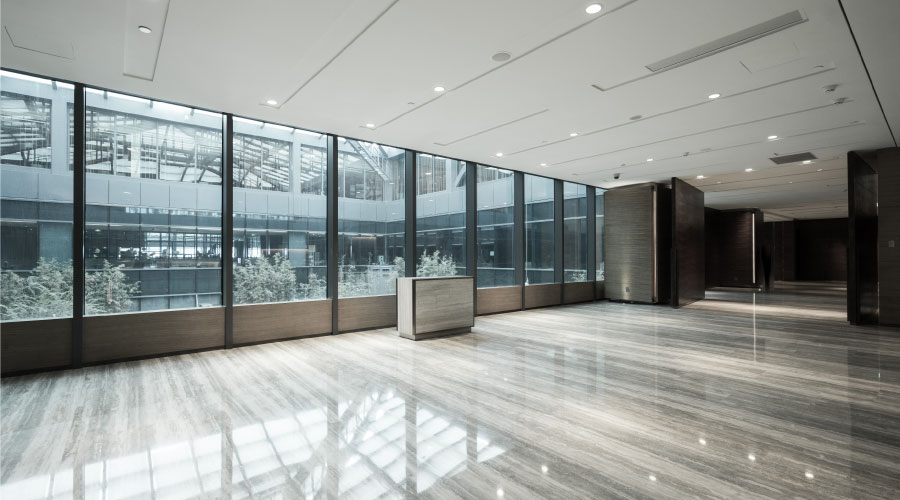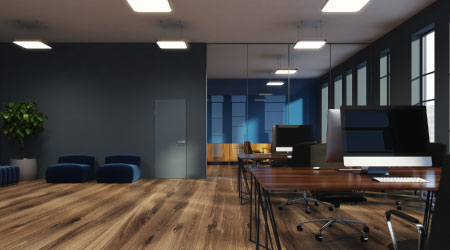Comprehensive Carpet Care
Thorough planning, the right equipment and a consistent plan make for longer-lasting, better-looking carpet
Housekeeping managers want carpet in their facilities to look their best at all times. Clean, well-maintained carpet gives a positive impression to those who see them, building occupants and visitors alike.
But maintaining a good image isn’t the only reason to keep floors clean and aesthetically pleasing. Cleaning carpets promotes a healthier indoor environment and better working conditions. Removing dust, mold, allergens, and bacteria-laden particulates is just one way a cleaner carpet contributes to a healthier facility.
Regular cleaning also extends the life of the carpet and allows managers to use savings in the capital budget elsewhere. Carpet cleaning machines can be expensive. Large carpeted areas might require such equipment as walk-behind extractors, shampoo machines, wide-area vacuums, and other more expensive machines.
While these big-ticket items are an important part of a carpet maintenance program, other equally important facets of carpet care make up a systematic maintenance program.
Walk It Off
The first step in reducing soiling is to prevent as much of it as possible from entering buildings. This actually begins outside, with keeping walkways and parking lots clean. In winter, removing snow and ice from walkways helps prevent moisture from entering buildings.
At entrances to buildings, walk-off mats are crucial in capturing soil that otherwise would be tracked in on shoes.
An ideal system of matting incorporates three stages. First are the scraper mats, which are aggressive mats designed to remove large pieces of soil from shoes. These mats generally are placed at entrances, just outside a building.
Inside, a second mat extending 4-5 feet captures any remaining large soil particles, as well as dust and moisture, from shoes. It is a good idea to use a mat with a water-dam design. This design, constructed with barrier ridges on the edges, keeps moisture on the mat.
The third stage is a walk-off mat with dense fibers capable of capturing any fine dust or soil residue still on shoes. Managers should ensure that mats are cleaned frequently because dirty mats loaded with soil are not as effective in decreasing the amount of soil tracked into buildings.
Spot It
A good all-around carpet maintenance system also incorporates smaller pieces of equipment that help remove soiling and spots that occur inside buildings.
A vital element of any carpet-care program is a spotting kit. These kits come with cleaning chemicals designed to remove specific soils and stains, a spotting chart, and a general spotting agent.
Cleaning crews can follow the spotting chart for directions on which chemical to use if a general spotter doesn’t remove a spot or soiled area. Spotting kits usually contain chewing-gum-removal products, as well as scrapers and brushes that can agitate the fibers.
A portable extractor is a must in removing spills and spots before they become stains. These machines come in a variety of sizes. The smallest are handheld and can be carried easily to extract and rinse a problem as small as a beverage spill. Some smaller extractors have up to three tanks — one for a cleaning solution, a recovery tank for dirty solution, and one for clear rinse water.
Larger portable extractors have larger-capacity tanks for cleaning solutions and accessories, such as hoses and wands. These machines can be used for cleaning entrances and eating areas, such as lunchrooms and break rooms.
Water vacuums with wands for use on carpets and rugs are invaluable in situations where cleaning crews must remove large amounts of water from a floor. Water vacuums are designed to remove large amounts of water quickly and have bigger recovery tank capacities than smaller portable extractors. Generally, water vacuums are not used for cleaning carpets unless they have cleaning solution hose attachments.
Suck It Up
Successful daily cleaning requires vacuuming. In areas where a wide-area vacuum is not practical, smaller upright vacuums and backpack vacuums are useful.
The advantage of smaller, portable vacuums is their ease of use. Backpack vacuums allow users to work in otherwise inaccessible areas, such as stairways and landings. They are also useful in crowded areas, such as offices.
Newer-generation backpacks and uprights are designed to have better suction and filtration capacity, and now high-efficiency particulate-arrestance (HEPA) filters are standard in many models.
Canister vacuums are making a comeback in popularity due to improvements in design. They are portable and have long cords and hoses that help cleaners reach more area. New canister vacuums offer lower noise levels than previous models, as many of them have quieter motors.
A carpet sweeper is another useful piece of equipment. Carpet sweepers are small devices mounted on handles with a cylindrical brush design for sweeping carpet into an enclosed dustpan or tray. Sweepers are designed for use in high-traffic areas where use of vacuum cleaners is difficult, such as cafeterias and restaurants.
An alternative to both a manually operated carpet sweeper and a vacuum cleaner is a stick vacuum. Also known as an electric broom, it is a small vacuum mounted on a handle that is much smaller than a conventional upright vacuum. These sweepers are available in both cord-electric and battery styles.
Fine-tune It
To remove some stubborn stains, many departments use a steam-vapor cleaner. These machines inject steam into the carpet, and the cleaner then blots out the stain. These small, portable machines combine high heat and low moisture to clean and disinfect spots and soiled areas on carpet and hard surfaces.
Finally, every carpet-cleaning arsenal should include power sprayers. These handheld tanks come with hoses and wands and are available in manual or electric-pump styles.
Sprayers are useful for applying pre-spray cleaning solutions in high-traffic and heavily soiled areas. After cleaning and extraction, cleaning crews can use sprayers to apply soil-retardant solutions, anti-static agents, deodorizers, odor neutralizers, and flame-retardant chemicals.
Having an effective carpet maintenance program takes planning and commitment. The proper equipment and supplies, combined with regular training, will help ensure the carpets look clean and attractive, last longer, and promote a healthier indoor environment.
Glen Franklin is a floor-care consultant based in Snohomish, Wash.
Related Topics:











